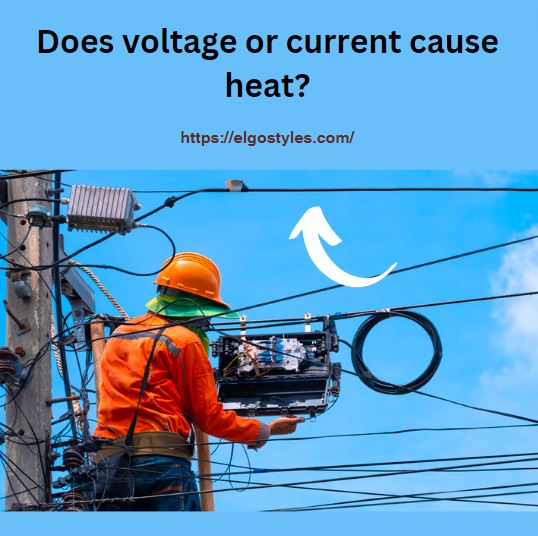Answer:
Current causes heat. When current flows through a resistive material, it encounters resistance, leading to the generation of heat according to Joule’s Law (P = I²R).

Reasoning:
Voltage represents the force that drives current, and resistance impedes the flow of current. When current encounters resistance (R), it experiences a power loss (P) in the form of heat. This is expressed by the formula P = I²R, where P is power, I is current, and R is resistance. Higher current or resistance results in more heat generation.
FAQs:
Q: Does voltage cause heat?
A: No, voltage itself does not cause heat. It’s the current flowing through resistance that generates heat.
Q: Can high voltage cause more heat?
A: Not directly. Higher voltage can lead to higher current, which in turn increases heat if resistance is constant.
Q: What role does resistance play in heat generation?
A: Resistance causes a power loss, leading to the generation of heat when current flows through a material.
Q: Why does a high-current device get hot?
A: The device experiences increased resistance, resulting in more heat generation according to Joule’s Law.
Q: Is heat generation proportional to current?
A: Yes, heat generation is directly proportional to the square of the current according to Joule’s Law.
Q: Can low voltage prevent heat generation?
A: Not necessarily. Even low voltage can cause heat if the current is high and encounters resistance.
Q: Does resistance always cause heat?
A: Yes, any resistance in a circuit results in heat generation when current flows through.
Q: How does a resistor dissipate heat?
A: A resistor dissipates heat by converting electrical energy into thermal energy due to the flow of current.
Q: Can a superconductor eliminate heat generation?
A: Yes, superconductors, with zero resistance, eliminate heat generation when current flows through them.
Q: Can I reduce heat in electronic devices?
A: Efficient design, cooling systems, and using low-resistance materials can help reduce heat in electronic devices.
 Electrical Engineering World Wiring a Brighter Tomorrow!
Electrical Engineering World Wiring a Brighter Tomorrow!